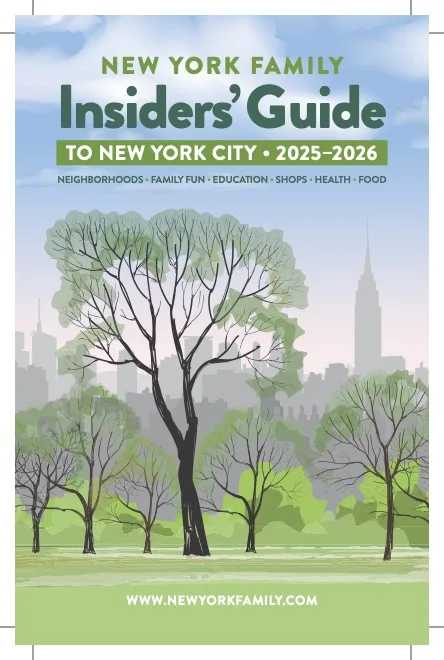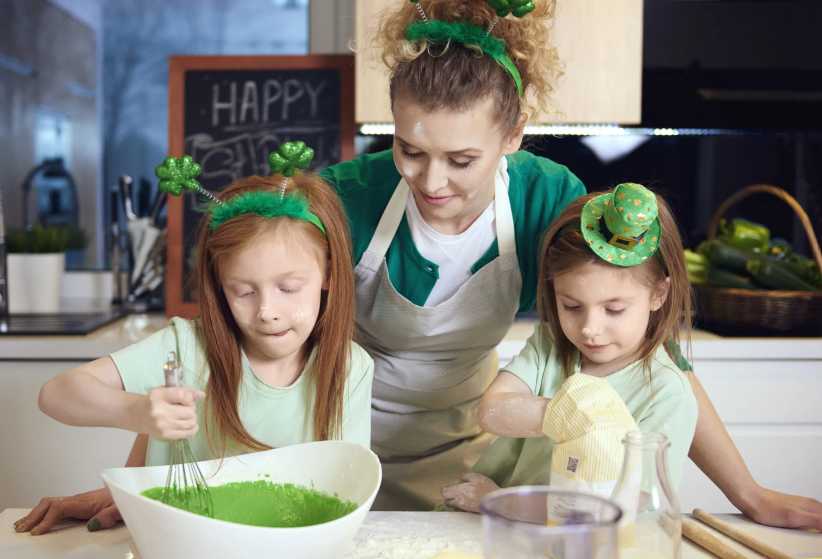All winter long, we hibernated from the cold and waited for the sun to come out. The bees are now buzzing, the flowers are blooming, the birds are chirping — it’s time to celebrate May — one of my favorite months of the year! School tests have been taken, and kids have fun on their minds … summer recess, camp, and family adventures. For this #FabULyssFinds column, I had the opportunity to talk with two wonderful doctors, Dr. Mary Ellen Renna and Dr. Annie Negrin about health issues we should be aware in May and beyond.
Dr. Renna is the author of “Growing Up Healthy the Next Generation Way: Add Years to Your Child’s Life and Life to Your Child’s Years.” Her program was awarded the “National Parenting Center Seal of Approval” and the “Children of the New Earth Seal of Excellence.” She is also a national spokesperson for Families Fit Together, a campaign designed to educate parents and children on how to stay fit. Dr. Renna is also the author of “Medical Truths Revealed: Breaking the Misinformation Chain,” divulging the secrets of medicine while addressing the issues of the times.
She lays out four steps to good health for your child that ensure he will be on a path to good health no matter what time of year we are talking about.
Anticipate: This step means being prepared! Anticipating the needs of your child means having a plan. If you are a new parent, be prepared to only offer healthy food options for your new baby. This will be all he is used to and he will learn to love eating well.
For the older children, this means preparing meals and not being caught off guard … i.e. working parents getting home late and using default fast foods or processed foods. Being prepared means thinking about healthy meals ahead of time and not letting yourself be stuck and giving in to a fast-food meal as opposed to a well-thought-out, healthy meal choice.
Eliminate: Get rid of the junk food in the house! There is NO reason for a closet full of Oreo cookies and Doritos to exist in anyone’s house. Having only healthy choices in the house allows everyone to be eating healthy and eliminates the temptation to eat bad foods regularly.
Participate: If you want your child to eat healthy, you must set the example by eating healthy and exercising. We are the teachers for our children. We can’t expect our kids to eat well if we are not eating fruits and veggies everyday. Their little eyes and ears see and hear everything we do and we must be eating well and exercising regularly. This is the only path to success.
Educate: As soon as a child is old enough to speak, we must teach him why we need to eat well and exercise and insist on good eating habits. It’s never too early to talk to your baby about health and what it means to be healthy.
It becomes second nature to the child who was raised in a healthy household — he understands that eating well is a way of life and is needed to maintain good health. Talking about how wonderful it is to eat broccoli and spinach, on a very simplistic level, is extremely helpful to the young child.
Talk about keeping your heart healthy and muscles strong. The younger a parent starts to teach her child about good eating and healthy habits, the easier it is to continue them on the path to good eating.
Dr. Mary Ellen Renna, physician and nutrition specialist at Next Generation Pediatrics [555 N. Broadway in Jericho, NY, (516) 677–9658, prohe
• • •
We lather our kids up with sunscreen before going outdoors from the time they are babies. We buy SPF 30 sunblock, long-sleeve swimsuits, and reapply after every swim, or at least try! So we get it, sun damage to skin is nothing to be cavalier about. But what about the sun and our eyes?
I am the mom who is chasing her kids in the playground after their sunglasses fall off or they rip their wide-brimmed hat off! Why? We now know that UV damage to our eyes is accumulating from when we are babies!
Dr. Annie Negrin, a board-certified ophthalmologist, gave us some tips on kids, sunglasses, and how to prevent sun damage to our children’s eyes.
Have young kids? You should know that the sun’s effects are building up when we are toddlers on the playground! Kids should wear a hat with a brim AND sunglasses — as long as the plastic pairs have the “UVA/UVB sticker,” you are good to go!
You don’t have to spend a lot on them — these can cost $5 to $10 a pair or even less if there’s a sale. I personally wait for a good sale and buy half a dozen for each of my kids. We know they lose them often, and they don’t want to wear them, but keep trying!
Another good tip: invest in the wrap-around Velcro band (One Step Ahead and other baby catalogs) that holds the frames around their head even if they take them off!
Remember, it’s not only sunglasses that can protect our eyes, but also visors and wide-brimmed hats that act like our own eyebrow ridges to help keep the rays out of our line of sight!
It’s difficult to say exactly how much UV exposure damages the eye over time, but we do know the effects are cumulative. It’s building up from when we are kids playing outside. The sun increases our chances of developing several eye problems, including:
Sunburned, chronically dry eyes. Also known as Photokeratitis, red, easily irritated eyes can come from sun damage that causes tiny benign growths on the surface of our eyes that prevent tears from naturally coating to protect and soothe. You may not even be able to see these in the mirror, but they can cause burning, tearing, and light sensitivity.
Macular degeneration. A leading cause of blindness in the US. Sun exposure is a risk factor for this degenerative disease, but so is age, having a family history, being Caucasian, and smoking. This disease doesn’t happen overnight. Your ophthalmologist will be able to detect even the earliest signs of this at your yearly eye exam.
Cloudy day? Don’t be fooled — the sun’s UV rays can pass through the haziest of skies, so you’re still at risk!
Unlike skin exposure, eye exposure to the sun is also dangerous — if not deadly — in the early morning and late afternoon.
Many of us think of the sun being most damaging between 10 am and 2 pm. This may be true for skin but the eyes are different! Our natural eyebrow ridge evolved to block rays from entering our eyes when the sun is at its highest. This is true for kids, too. It’s the earlier morning and late afternoon hours that the sun’s position is lower in the sky and therefore hits our eyes at an angle that our brow can’t protect us from! So on the early morning walks with the dog and late afternoon strolls is when it’s even more important to put on those sunglasses!
Sun exposure to the eyes tends to be more constant in fall, winter, and spring, when the sun is lower in the sky. Cold winter day? You still need sunglasses! If the sun is out, temperature doesn’t matter.
Many people think that the more you spend on sunglasses, the better they protect. It’s just not true! You need to look for the “UVA/UVB” sticker on the frames, then you know you’re getting the protection you need. So, a $10 pair in the drugstore that has the sticker is just as effective as a brand-name trendy pair bought at a specialty sunglass store!
Another price option is a term called “polarization.” This term refers to the offsetting of light scatter in your eye during driving or biking or any other outdoor activity. Most drugstore glasses won’t have this, and you’ll pay extra for polarized lenses in a specialty store.
Remember, polarization has nothing to do with UV protection for the eye.
If following the latest trends is your thing, this spring’s aviator-style lenses are more popular than ever! And from your local drugstore to a Solstice or Ray-ban store, there are tons of aviators to choose from, with good protection at any price point!
For more information on Dr. Annie Negrin, email asnre
Lyss Stern is the founder of DivaLysscious Moms (www.divam














